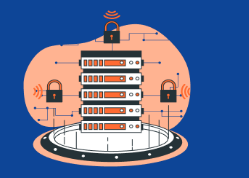We’re thrilled to introduce MSP360 RMM 2.2, the latest version of our remote monitoring and management software. This release brings impactful updates, including the RMM Alert Profiles for streamlined alert configuration and control, the ability to trigger post-actions from alerts, and support for software installation directly from a network share or local disk. It also includes several other enhancements designed to optimize your workflow. Continue reading
Hunters vs. Farmers: Guide to MSP Sales Personas
Just as organisms need different kinds of care at different stages of development, so do businesses. The marketing and sales strategies that help a startup see success, may not work for a more stable business that’s been in the market for a while. Continue reading
Lifecycle Policy to Move Data to Glacier
Amazon S3 offers a wide range of storage classes designed for different use cases. Various combinations of those storage classes allow you to cost-effectively store your data throughout its lifecycle. Continue reading
How to Back Up Data to Amazon Glacier
Since Amazon S3 Glacier became a part of the Amazon S3 service, the first place you should start is to add your Amazon S3 storage account to the MSP360 Managed Backup software.
Continue reading
CloudBerry Explorer for macOS 1.2 is Out
Introducing the new and updated version of MSP360 Explorer for macOS. We’ve listened to your feedback and are glad to present the latest version of our freeware tool. Continue reading
News You Might’ve Missed. 31 Aug – 04 Sep
What's new this week in the news for MSPs?
Azure Spring Cloud launched by Microsoft; AWS debuts Rust language Bottlerocket for Linux containers; Emotet new Red Dawn malware dangerous, say researchers; New Qbot trojan launches Microsoft Outlook threads; and Tesla cybersecurity ransomware attack prevented. Let's see what it's all about. Continue reading
Every Month Is Cybersecurity Awareness Month
October is known as National Cybersecurity Month in the US. Due to the accelerated growth of cybersecurity risks, this sounds appropriate for end or home users but, at the same time, the situation is equally dangerous for any knowledgeable managed IT provider. Continue reading
Starting a New IT Department from Scratch: Where to Begin
Starting an IT department from scratch may not seem like a common occurrence these days. But it happens. You may find yourself hired as an IT engineer for a small company that has no formal IT department in place, leaving it up to you to create one. Or, you may join a company that previously used a third-party IT provider or MSP, but has now decided to migrate to an internal IT strategy. Continue reading
How to Build a Successful MSP Business
Many MSP owners struggle with building their businesses when they’re focusing on improving the wrong aspects of their operations.
The key to growing a successful business is always to enhance what matters to your customers. By doing so, you put yourself in a better position to make the right decisions more easily when the pressure is on. Continue reading
News You Might’ve Missed. 24 – 28 Aug
What’s new this week in the news for MSPs? New tools for developers from Github co-founder; IBM doubles 27-qubit Falcon chip quantum volume; hurricane season checklist for MSPs; US passes Cyber Storm test, says CISA; Freepik suffers a data breach, losing 8.3m records to hackers; and Flash to reach the end of life in December 2020. Continue reading
How Checklists Can Power Your MSP Business
If we’re being honest, one thing you’ll admit about the human brain is, it can’t always be relied on. It tends to forget even the most important steps in routine processes.
Now that’s precisely where checklists come in. Although they are often overlooked, checklists are critical in organizing all sorts of projects. But not just in the MSP world. If you keenly observe other professionals, you’ll notice that pretty much everyone is now using checklists in their work environments. Continue reading
How Your Employees Can Contribute to Your MSP Business
Some managed IT services leaders tend to treat their staff members as disposable assets, leaving no place for creativity and personal growth. Indeed, they will tell you, the workplace is no place for games, and orders should not be discussed. Continue reading














